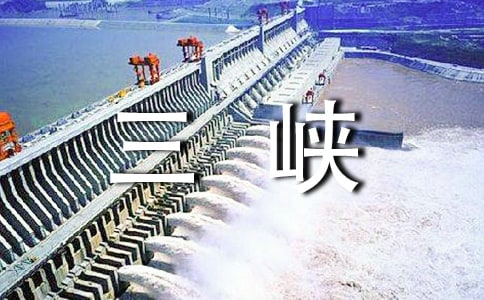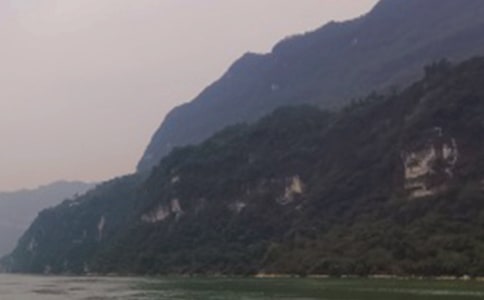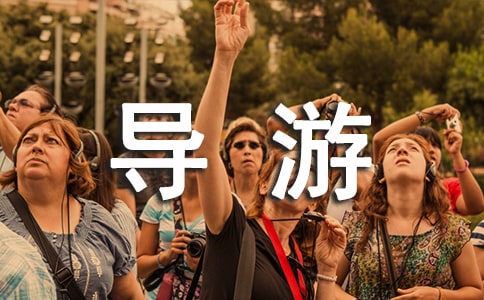丽江壁画英文导游词
Ten kilometers (six miles) northwest of Lijiang Old Town, there are several ancient villages, including Baisha, Dayan, Shuhe, Yangxi and Xuesong. There, the invaluable Lijiang Mural is stored, preserved and displayed in 15 venerable temples, such as Juexian, Wande, Guiyi temples and Sanbi Garden. Altogether, the mural used to include more than 200 pieces of fresco. However, hundreds of years of historical vicissitudes have left only 55 pieces in good condition. The most famous frescos are known as Baisha Mural of the Dabaoji (Great Treasure) Palace and the Colored Glaze Temple (Liuli Dian) in the town of Baisha.
Not far from the Dujiang Dam, a Daoist temple complex was wrwcted was erected to commemorate the benevolent rule of Li Bing and his son who succeeded him. Li Bing and his son were granted the posthumous title of Wang. The folk story says that July 24of the Chinese Lunar Calendar is Li Bing' birthday. On the day many local people visit the temple where they prostrate themselges before the image of Li Bing and his son and burn incense to honor them. The larger-than-life painted statues of father and son overlook the rushing river below. Nearby a stone tablet os engraved with a famous six-character quotation from Li Bing,"when the river flows in zigzags, cut a straight channel. When the riverbeb is wide and shallow, dig it deeper." The temple which is built near the mountaintop, is a popular stopping place for sightseers. There one can enjoy a unique view of the most modern parts of the water conservation project.
The Li River also is a pleasant setting for displays of cormorant fishing. Fishermen on bamboo rafts use strong lights suspended over the water to attract the fish. The cormorants, which are tethered with rings round the base of their necks, catch the fish and then disgorge them for the fishermen.
Most of the temples were built from the early days of the Ming Dynasty (1368-1644) to the early Qing Dynasty (1644-1911), and the Lijiang Mural was created at the same time, over the course of about 300 hundred years. In Lijiang, it was an era of rapid economic development, mutual acculturation of multinational culture, and the growth of religions. Accordingly, Lijiang Mural was an artistic representation of this cooperation, communication and progress. The authors of these mural paintings had come from different nations, including the local Naxi Dongba painters; the Taoist painter Zhang from the Central Plain; an Lama artist Guchang; Han painters Ma Xiaoxian and Li Zeng; and many other artists who were unknown to the public
The originality and figures of the mural paintings reflect the different religious cultures and artistic forms of Buddhism, Lamaism, Daoism and the Naxi Dongba religion, as developed in a Naxi school. Therefore, Lijiang Mural is quite different from other frescos. Each painting includes at least one hundred portraits, but perspective is used very well, and the close, middle and establishing images are clear. The various lifelike portraits are not only Buddhas but also ordinary people such as bureaucrats, criminals, tourists and executioners. Many of the scenes and subject matters are drawn from daily life-people are shown fishing, riding horses, weaving, dancing and casting iron. The painters used different methods of portrayal within the different elements of the fresco, such as flesh, garments, jewelry, weapons and many other components. The style of these true-life frescos is rural and unconstrained; the colors are strong and have intense contrast but are also unified. The Lijiang Mural fully demonstrates the superb artistic skills, outstanding creativity and rich imaginations of these excellent craftsmen. The vivid and exact figures, flowing lines, well-defined colors and powerful effects of the exquisite details make the Lijiang Mural not only the rare treasure of art, but also forceful proof of national solidarity and an important source of information for research on national religions, arts and history.
趵突泉公园位于济南市中心繁华地段,是国家AAAAA级旅游景区,南倚千佛山,北靠大明湖,东与泉城广场连接,是以泉水、人文景观为主的文化名园。下面是为大家收集的关于山东趵突泉英文导游词,希望大家喜欢!
Now, here we are at the “He Xi Platform”, “He Xi” means the “the splendour of the sunrise”, It was named by Zhuxi, a great idealist philosopher of the Confucian school during the Song Dynasty, The platform was first built on the top of Yuelu hill, by Zhanshi, and later in 1528, a pavilion was built on it, But it became deserted with the passing time. In 1790 Luodian, the master of the academy, built a platform at the present site, In 1820, the succeeding master, Ouyang Houjun, renamed it “He Xi Platform” in order to memory Zhuxi and Zhanshi. It was restored in 1868.
各位朋友,我们下面要去游览的地方是木府。木府是丽江古城文化“大观园”。 少数民族木氏土司历经元、明、清三朝22世,共470年,史称其“知诗书,好礼守仪”。木府原系丽江世袭土司木氏衙署,“略备于元,盛于明”。徐霞客叹木府曰:“官室之丽,拟于王者。”木府历经战乱动荡的损毁,于1998年春重建,并在府内设立了古城博物馆。
【丽江壁画英文导游词】相关文章:
1.英文导游词
2.长城英文导游词
3.亳州的英文导游词
4.北京英文导游词
5.上海英文导游词
6.成都英文导游词
7.华山英文导游词
8.西安英文导游词



